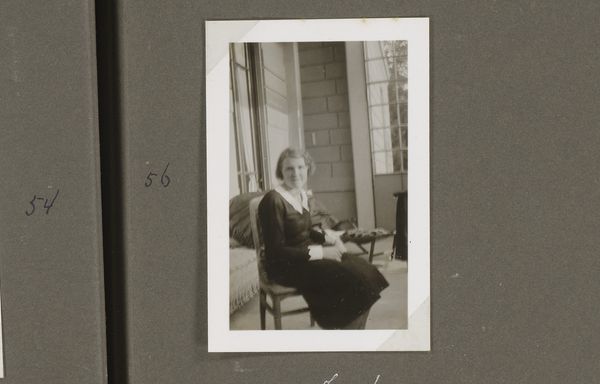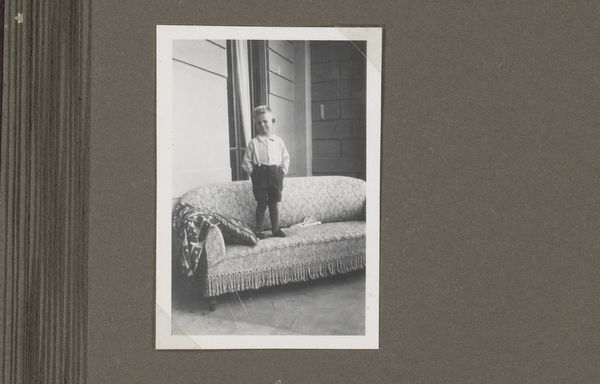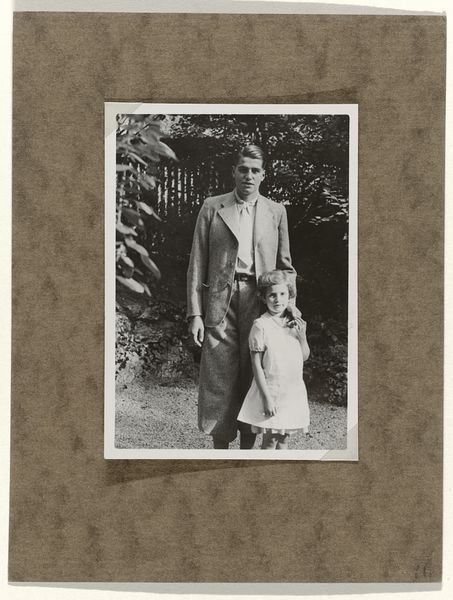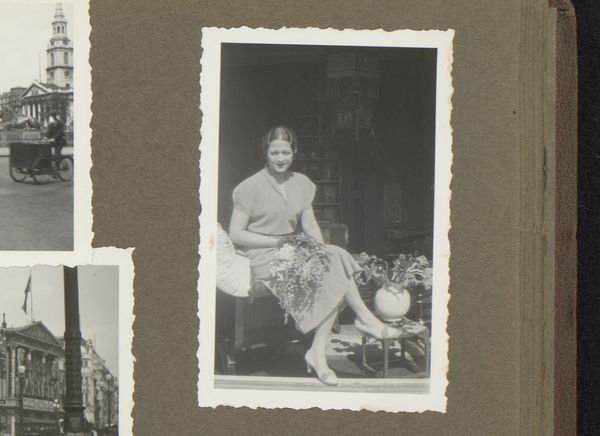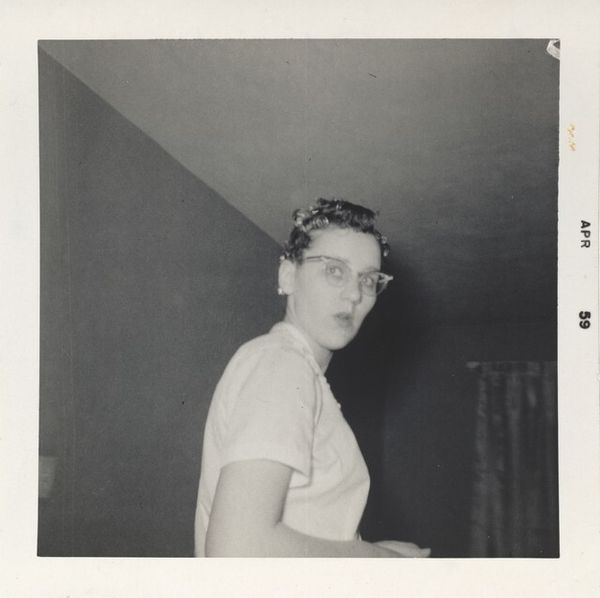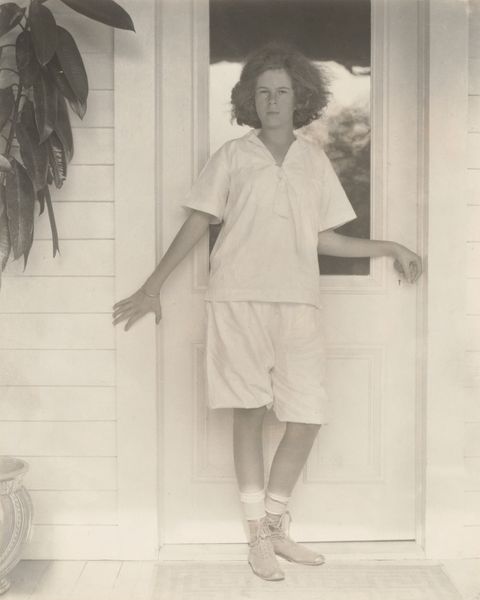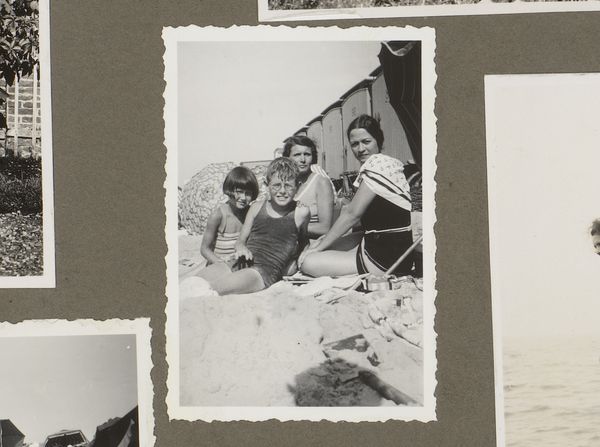
photography, gelatin-silver-print
#
portrait
#
print photography
#
landscape
#
photography
#
gelatin-silver-print
#
genre-painting
#
realism
Dimensions: height 88 mm, width 60 mm
Copyright: Rijks Museum: Open Domain
Editor: Here we have "Thea zittend," a gelatin-silver print from 1943. It's a small portrait, quite intimate actually. The woman’s holding what looks like a small dog, and it strikes me as both a very personal and somewhat melancholic image. What historical contexts can we consider here? Curator: Given the date, 1943, this seemingly simple portrait exists firmly within the context of World War II. Photographs like this become incredibly potent; they're not just images, but documents of lives lived, interrupted, or lost. Think about the politics of imagery at that time, how portraits served to maintain connection and identity during immense social upheaval and displacement. What do you think it meant to create and circulate such an image during wartime? Editor: I suppose it would be an act of preservation, maintaining a sense of normalcy and connection to loved ones, a piece of home you can carry. What's the significance of the setting, inside a doorway like this? Curator: The doorway is intriguing. Is it a threshold to safety, a point of transition, or a liminal space suggesting uncertainty? The very act of documenting "everyday" life also carried political weight during conflict, pushing back against erasure and asserting continued existence. Do you think this was presented for public viewing or was of a more private setting? Editor: Knowing what we know of the time period, the doorway certainly hints at uncertainty to me. I’d guess the photo was initially intended for private viewing. Does the domesticity downplay any kind of political statement? Curator: Not necessarily. Domesticity itself can be a powerful statement during times of crisis. What could be read as simple, familial affection might be interpreted as resistance against the devaluing of individual lives inherent in wartime. It’s in how the mundane attains public meaning during crisis. Editor: So, something seemingly apolitical is actually deeply political by virtue of the socio-historical context. Thank you. I'll never look at old photographs the same way again. Curator: Exactly. The political lies often in the perceived ‘ordinariness’ we project. Now you’ve begun to see the power in what is captured, but also in who is missing from the frame.
Comments
No comments
Be the first to comment and join the conversation on the ultimate creative platform.
